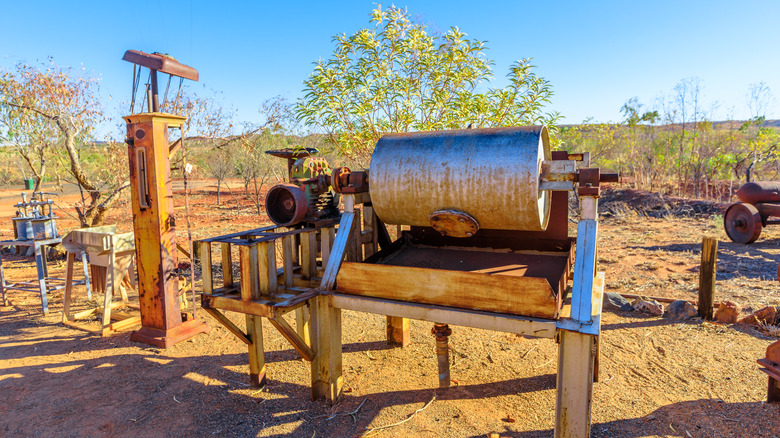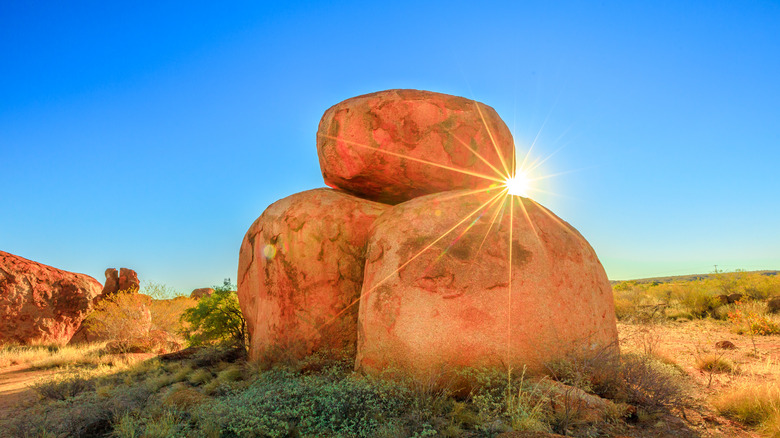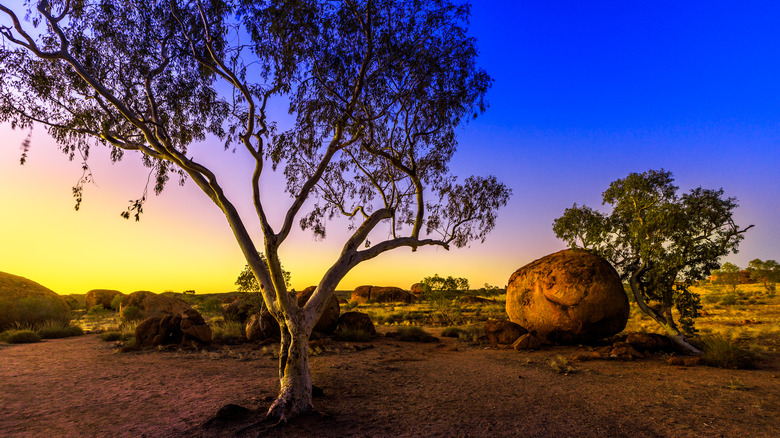As we hit the most frustrating part of winter — the post-holiday doldrums — it’s only natural to dream of the sun. Maybe you’re imagining yourself walking through a field of boulders that look like they defy gravity as the sun warms your bones after the long winter. If you can relate to this, we have a suggestion for you. Forget the crowds of the usual tourist spots. It’s time to get out there and touch some grass in the Australian outback.
If you’re planning a trip to the northern territory, say, visiting a national park for one-of-a-kind sunset views or hiking Australia’s Appalachian Trail, there is a beautiful little place with a lot of history and some natural wonders that you cannot afford to miss out on. This little hidden gem lets you escape the stress of your daily life and find solace in peace and quiet. This pretty town is called Tennant Creek. Sitting about five hours north of Alice Springs and nearly seven hours south of Katherine, Tennant Creek is called Kunjarra by the Warumungu people. It was visited by Scottish Explorer John McDouall Stuart, who named it after his sponsor, John Tennant, in 1860. Then, gold was found. Let’s look at Tennant Creek and what you can do there and around the area.
What to do at Tennant Creek

Tennant Creek got its claim to fame in 1932 when gold was discovered in the area. In 1955, copper and silver were found. You can understand what it was like to be in the gold mines by visiting the Battery Hill Mining Centre, the country’s last operating ten-head gold stamp battery. (A stamp mill uses a large machine to crush the gold ore so you can get the gold.) When you visit, you can “fossick” (the local dialect for searching for gold) and bring home what you find. There are machines still around to see, a few exhibits for an extra fee, and some self-guided walking trails. Even better, it’s under a mile from the town center.
While in town, you can visit the Church of Christ the King, built in 1904. This church got a strange nickname as it was built in Pine Creek, just under 500 miles away. It was later moved to Tennant Creek, but it was done during the rainy season, with parts of the church ending up all over the place — some almost 500 miles apart. It’s now called “The Longest Church in Australia.”
Stop by the Tuxworth-Fullwood House, a museum that will teach you all about the area. However, do note that it is only open for two hours a day from May through September. You can also visit the Overland Telegraph Station, about 6 miles north, to see what communication was like when the town was new.
A gem in the outback

This is a small town, but it boasts several supermarkets and restaurants. There are many places to stay, from caravan parks to camping and lodging, like the Safari Lodge Motel and Goldfields Hotel Motel. Stay the night because sunset is a magical time. The weather is warm all year, with average highs near 100 degrees Fahrenheit in the summer (winter in the Northern Hemisphere), so bring sunscreen. It’s in the 70s and 80s degrees Fahrenheit in the winter, making it just about perfect. That’s important for visiting Karlu Karlu, aka Devil’s Marbles, about 60 miles south of the town.
Karlu Karlu has boulders that form incredible natural sculptures, with some looking like they’re about to tumble. They change color in the bright Australian sun, and the sunset is spectacular. There are signs about the ecology of the place, and you can camp here if you book beforehand. There are public toilets and a picnic area. Don’t climb the rocks, as requested by Kaytete, Alyawarra, Warumungu, and Warlpiri peoples, the traditional owners of this area. Some fees apply, so check for the latest info beforehand.
Don’t miss the Nyinkka Nyunyu Art and Culture Centre, which has an Indigenous art gallery and a café. You can also hike a little over 3 miles to the man-made Lake Mary Ann, where you can swim to cool off or take out a canoe or a kayak. There are picnic areas, restrooms, and even spots where you can barbecue.

